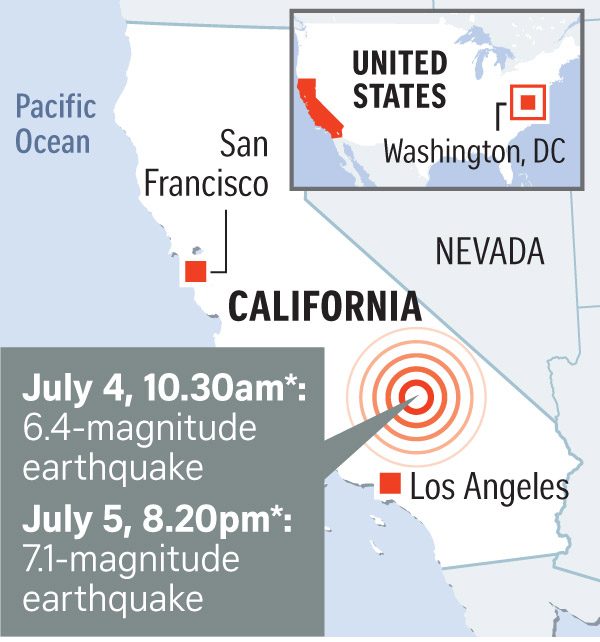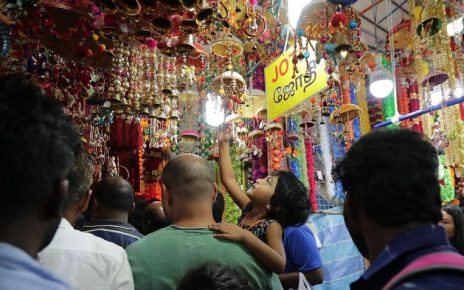RIDGECREST • Emergency officials and jittery residents in the high desert of Southern California braced themselves for potentially dangerous aftershocks from a major earthquake that damaged buildings, ruptured gas lines and sparked fires near the remote epicentre of the temblor.
The powerful magnitude-7.1 tremor rocked the Mojave Desert town of Ridgecrest south of the Death Valley National Park as darkness fell on Friday, jolting the area with eight times more force than a 6.4 quake that had struck the same area 34 hours earlier.
California Governor Gavin Newsom yesterday issued a state of emergency in the neighbouring San Bernardino County, following another one last Thursday in Kern County where Ridgecrest is located.
Seismologists said the initial quake on Thursday, and dozens of smaller ones that followed it, proved to be foreshocks to Friday’s much larger temblor, which now ranks as Southern California’s most powerful since a 7.1 quake that struck near a US Marine Corps base in the Mojave Desert in 1999.
“We have significant reports of fires, structural fires, mostly as a result of gas leaks or gas line breaks,” Office of Emergency Services director Mark Ghilarducci told a late-night news conference on Friday.
Violent shaking caused breaks in the water mains and knocked out power and communications to parts of Ridgecrest, a town of about 27,000 that is around 200km north-east of Los Angeles.
So far, no fatalities or serious injuries had been reported from either quake, police said.
“This was a very large earthquake, and we also know there’s going to be a series of aftershocks as a result of the main quake,” Mr Ghilarducci said, adding that his agency faced a “challenge” getting needed resources to the isolated quake zone.
Overnight, about six hours after the main quake, the town centre of Ridgecrest was quiet, except for the occasional rumble of aftershocks. Some residents could be seen sitting on lawn chairs in the darkness outside. The garage doors of many homes were left open with cars parked on the driveway.
Friday’s quake was widely felt across Southern California, including in greater Los Angeles, where shaking in some areas lasted about 40 seconds.
Low-level rumbling extended as far north as the San Francisco Bay area and beyond to Reno, Nevada, and as far east as Phoenix, Arizona.
The US Geological Survey said Friday’s big quake was immediately followed by at least 16 aftershocks of magnitude 4 or greater and warned of a 50 per cent chance of another magnitude-6 quake in the days ahead. Geologists put the chance of another magnitude-7 tremor at 10 per cent over the next week.
In Las Vegas, where an NBA summer league game took place between the New York Knicks and the New Orleans Pelicans, the action was halted because of the quake.
Pelicans point guard Frank Jackson was bringing the ball upcourt when he felt the earthquake.
“That was crazy,” he said. “I felt like someone was pushing my hip – I kind of leaned this way and was like, ‘Oh my gosh, what is going on?’ And then I saw everything shaking.”
Mr Victor Abdullatif was helping clean up broken bottles and other debris inside his father’s liquor store, the Eastridge Market, which sustained structural damage to its ceiling.
He found the periodic aftershocks unnerving. “They’re still scary because you almost don’t know, ‘Is this going to be a full earthquake?’ You have to kind of have faith that it’s just an aftershock,” he told Reuters.
The last major destructive quake to hit Southern California was the 6.7-magnitude Northridge quake in 1994, which struck a densely populated area of Los Angeles. It killed 57 people and caused billions of dollars in property damage.
REUTERS, NYTIMES



